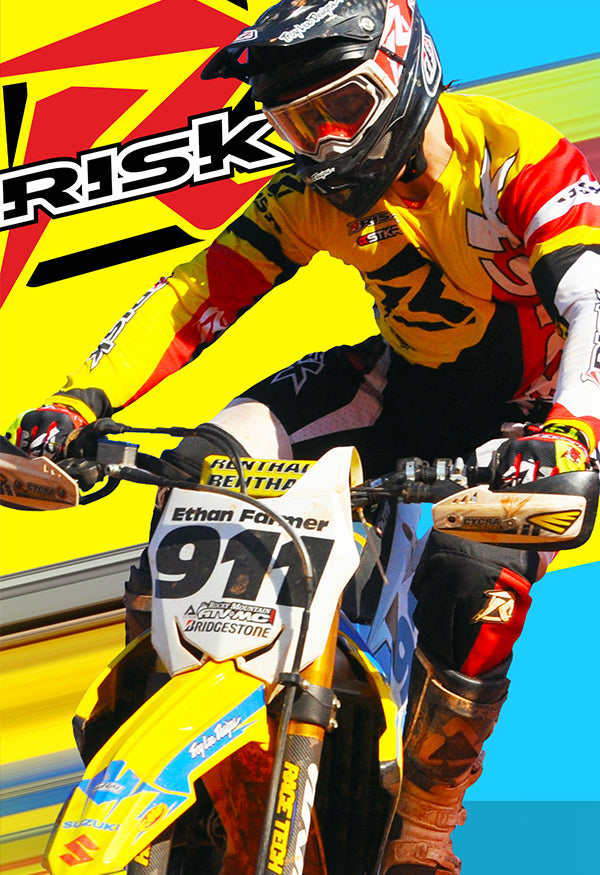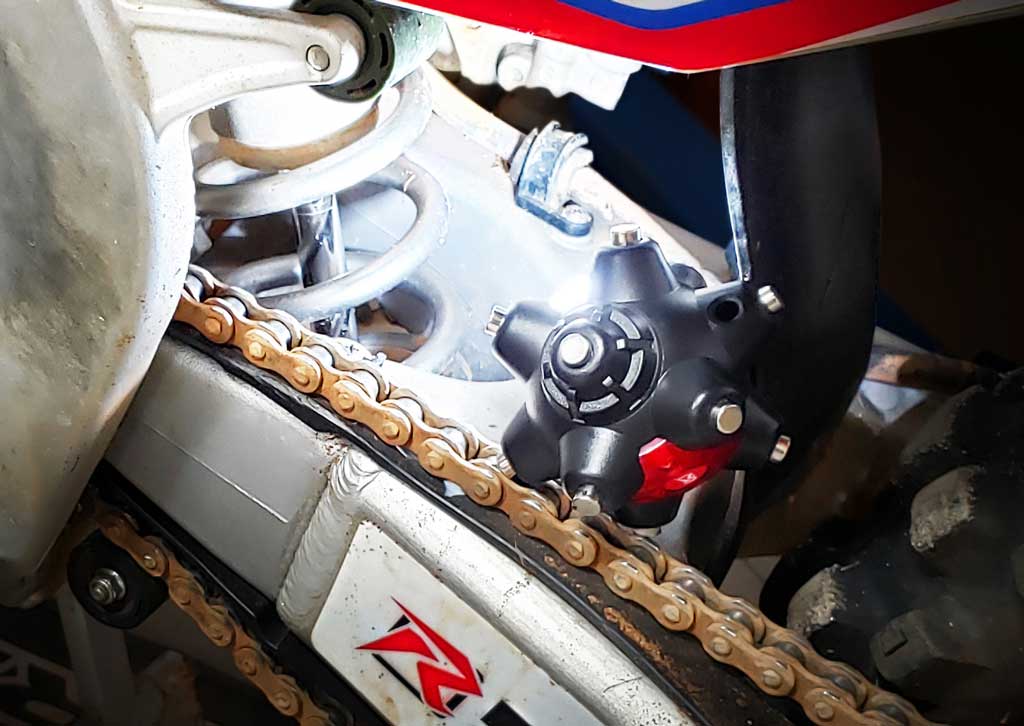Your Cart is Empty
MOTO Products
shop your way
Choose a shopping experience
Same great Risk Racing products, 3 completly different ways to shop them.
Choose a shopping experience
Same great Risk Racing products, 3 completly different ways to shop them.

Lifestyle Shopping

eComm Shopping

Catalog Shopping
MOTO TYRES
MOTO Gear & Apparel
How Often Should You Service Your Dirt Bike?
January 11, 2021 5 min read

As their name suggests, dirt bikes tend to get pretty messy. For most of us, we tear through mud, dirt, water, foliage, and just about anything you might find around a track or on a trail. As a result, we have to take care of our machines to ensure they stay in top condition. So how do you determine when you need to service your bike?
Knowing when to service your dirt bike depends on how you use it. You should complete routine maintenance like chain oil, air filter replacements, and tire pressure before every single ride. You should only need to replace parts and service extensively every 100 hours of use or more in rugged conditions.
All it takes to learn your bike's specifics is some knowledge of maintenance and an understanding of how your riding habits will affect your bike's service requirements. So let's take a look.
Are Dirt Bikes High Maintenance?
Many aspiring dirt bike riders, especially those who come from the world of street bikes, worry that dirt bikes are high maintenance. Despite being a pretty widespread belief, they are not extremely difficult to maintain. They just require basic maintenance more often.
Several things can and should be maintained after every single ride, and if you can get in the habit of doing these simple service practices after every ride, you will find maintaining your dirt bike very easy.
While this list is not exhaustive, it does cover the most fundamental aspects of regular service.
- Wash your bike after every ride.
- Lube bike chain and check tension.
- Change or clean the air filter after every ride.
- Check tire pressure.
- Change or refill engine oil every other ride.
- Visually inspect parts while cleaning to be prepared when replacements are necessary.
It's important to note that following this checklist will not be enough on its own. However, following it after every ride will ensure that you will be aware of your bike's exact condition and give you plenty of warning for more extensive service requirements.
How Do You Maintain Your Dirt Bike?
As mentioned above, servicing your dirt bike frequently is the key to having it perform well and last a long time. Our basic checklist is a great starting point for riders, but the time will come when more thorough maintenance is required, so let's look at that process.

Air Filter
In our checklist, we mentioned that the air filter needs to be changed or cleaned after every ride. This regularity is because sand, mud, and other dirt quickly degrade air filters, and most dirt bikes tend to spend a lot of time in those conditions. Ensure that your air filter is adequately enveloped in oil. Too much oil will bleed into the engine; too little oil means the intake will not properly strain contaminants.
One tip that some riders follow is owning several air filters. Having multiple filters ready to go means that you can just swap out the used filter after each ride, and then when you are on the last one, wash and clean them all to have the full set ready to go again.

Brake Pads
It should come as no surprise that you want to make sure that your brakes work correctly on your bike. Over time, your brake pads' material will wear all the way down to the backing plate. This degradation's exact pace will depend on your usage, though it is safe to say that muddy and sandy conditions will erode the pads more quickly than drier conditions.
The general rule to follow is to replace the pads when there is around 1mm (0.04 inches) of material left. Some brake pads will have indicator marks that show when they need to be replaced, but keep a micrometer on hand to measure them if yours do not.

Engine Oil
Operating any vehicle with a motor means you must consider the engine oil. There are two factors to consider in this section: when you should refill the oil and when you should replace it. Most dirt bikes will have a sight glass on the bottom of the engine case, and the engine oil level should be about halfway up the glass.
Understanding when to replace the engine oil will depend primarily on the make and model of your bike. Check your owner's manual to determine when you need to replace the oil and the oil filter.

Chain Tension
While we mentioned chain tension in our checklist, it is an important (and often overlooked) aspect of bike maintenance. Since this component is the device that transfers the engine's energy to make the rear wheel spin, it needs to be in perfect working condition. Too tight can cause the chain to break, and too loose may cause your chain to slip off a sprocket and damage your bike.
When maintaining your drive chain, after you have lubricated the chain and rotated the wheel several times to find the tightest point, measure the distance between the top of the chain slider and the bottom of the chain to know if you have the correct amount of slack. Like the engine oil, your owner's manual will have information on the recommended drive train slack as it can vary from manufacturer to manufacturer.

Sprockets
For those less familiar with the technical terms, sprockets are (in combination with the drive train) the extremely durable component that transfers power to the rear wheel. As a result of this constant stress, these parts will slowly wear out, worsening if the chain is too tight or too loose, as mentioned in the previous section.
You will know that your sprockets are wearing out when you start to see an asymmetrical wear pattern in between the teeth. That deterioration is caused by the drive chain's rotational force and is a good sign that it's time to make some replacements!

Wheels
As the (hopefully) only part of your dirt bike that makes contact with the ground, your tires will undergo a tremendous amount of strain with every ride. Inspecting your wheels should be a regular part of your maintenance routine. It is worth investing in a spoke torque wrench to ensure that you have the tools necessary to tighten your wheel spokes correctly.
Also, check the rims themselves to ensure that they are round and aren't suffering cracks or dents, and check the air pressure using an accurate gauge before every ride. Always remember, however, that wheels don't last forever and that your rear tire and wheel will wear out about three times faster than your front one will.
Final thoughts
Dirt bikes take a beating; there's no doubt about that. While that may be daunting to newer riders, it shouldn't be enough to discourage them from going for a ride anyway. As we've established at this point, dirt bikes require consistent attention to perform at the level we expect of them, but that attention doesn't have to be incredibly time-consuming.
One common trend between all the aspects of dirt bike servicing that we've covered is that keeping an eye on your bike's parts will give you plenty of heads up when they need replacement. As long as you properly clean and maintain all of the various moving parts of your bike and then replace the parts when they need it, you will get to spend more time riding and less time worrying if it's going to fall apart while you're on the track.
Leave a comment
Comments will be approved before showing up.
Subscribe
Sign up to get the latest on sales, new releases and more …

Limited Time 10% Off
Save on your 1st order and get email offers when you join.
Eligible for first-time website purchases only. Emails may take a few minutes to process and could get flagged by email providers as junk so be sure to wait a little bit and check your junk and/or spam folders.

 UK/EU▾
UK/EU▾




























